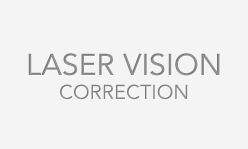Laser Vision Correction

Laser Vision Correction is the most widely used type of refractive surgery for the treatment of myopia, hyperopia, and astigmatism. Vision correction is accomplished with minimally invasive procedures by reshaping the cornea to correct the patient’s individual refractive errors. Many patients achieve 20/20 vision or better after treatment. These procedures help patients reduce the need for eyeglasses and contact lenses, a costly and bothersome hassle that millions of people deal with everyday. The two most common surgical procedures used in laser vision correction are LASIK (Laser In-Situ Keratomileusis) and PRK (Photorefractive Keratectomy). Both of these procedures utilize the excimer laser which breaks chemical bonds in corneal tissue to change the shape of the cornea and correct refractive error. Dr. Greco uses the VISX™ STAR S4 Excimer Laser System with ActiveTrak™ to perform laser vision correction for his patients.
Wave-front technology is available to measure the refractive error of the eye 25 times more precisely than the refractive techniques use to prescribe eyeglasses or contacts lenses. Dr. Greco utilizes the Advanced CustomVue® Wavescan and Wavefront System to generate a WavePrint Map or “Finger-print” of the eye to formulate an individualized eye treatment plan for each of his laser vision correction patients. This wavefront data in then transferred to the VISX™ STAR S4 IR® Excimer Laser.
LASIK
A laser or device called a keratome is used to create a thin flap of corneal tissue which is lifted exposing the underlying corneal bed. The excimer laser is used to reshape the cornea to achieve the desired correction. The flap is then carefully placed in its original position.

LASIK is considered a safe procedure, yet it is not ideal for everyone. A thorough medical evaluation of the patient’s eyes will be performed in order to determine if the LASIK procedure is appropriate, or if the patient would benefit from another type of refractive procedure.
Candidates eligible for the LASIK procedure include patients who meet the following requirements:
- Are over 21 years old
- Not pregnant or nursing
- In general good health
- Has had stable vision for at least six months
- Has a healthy cornea thick enough for a flap
- Has refractive errors that fall within the treatable range
- It is also important for patients to fully understand the details and risks of the procedure, and maintain realistic expectations as to the outcome of the procedure.
Photorefractive Keratectomy (PRK)
The surface cells of the cornea are removed with either an excimer laser, keratome, epithelial brush, or a metal blade. Then, the excimer laser used to reshape the cornea. A contact lens is placed on the eye for the next three to five days while the epithelium is growing back over the surface of the cornea. PRK is usually performed on patients whose cornea are too thin to undergo the LASIK procedure.










